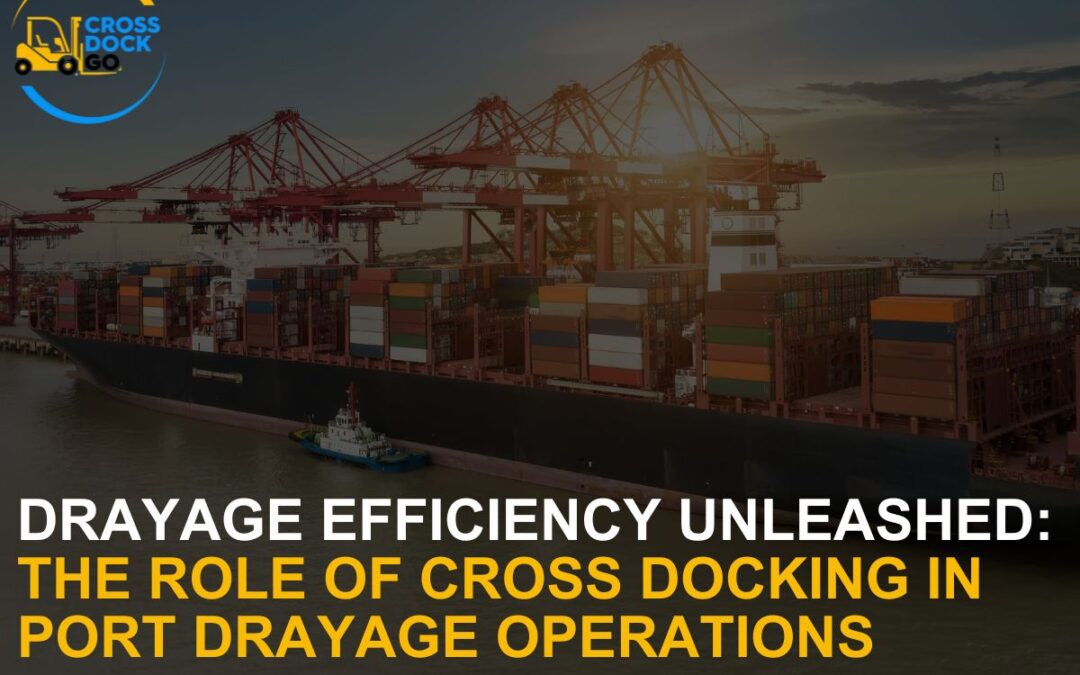Businesses are constantly seeking innovative solutions to enhance efficiency and reduce costs. One area that can significantly affect profitability is the cost of shipping. Cross-docking and drayage have emerged as powerful tools in revolutionizing shipping operations, benefiting your bottom line. Utilizing these tools effectively can make your shipping more efficient and profitable.
Understanding Cross-Docking and Drayage
Businesses are constantly seeking innovative solutions to enhance efficiency and reduce shipping costs, which can significantly impact profitability. Cross-docking and drayage have emerged as powerful tools to revolutionize shipping operations and benefit the bottom line. Effectively utilizing these tools can make shipping more efficient and profitable.
Cross-docking is an intelligent approach to handling incoming deliveries, swiftly unloading products from an arrival vehicle and placing them directly onto an outbound one. This bypasses the delays and costs of warehousing and handling. Drayage involves carrying freight, usually for shorter distances, from one mode of transport to another, such as from a ship to a rail car or from a rail car to an end-point warehouse. Efficient drayage services, particularly at ports, alleviate congestion and expedite the movement of goods to their final destination. Combining drayage services with cross-docking ensures goods don’t sit in port.
The combination of cross-docking and drayage minimizes transportation time, reducing the need for warehousing and storage expenses. High-volume or perishable goods benefit significantly, ensuring swift delivery and eliminating problems associated with supply chain delays or spoilage. All stakeholders—retailers, suppliers, and customers—enjoy increased efficiency, lower inventory costs, higher revenues, greater profit margins, and faster delivery.
Transportation costs decrease when drayage shippers utilize cross-docking facilities for quick offloading and reloading. Modern technology enables the use of automation in routing freight and generating Bills of Lading quickly, ensuring cargo is directed to the appropriate transport vehicle promptly. Cross-docking is valuable for shipments from multiple suppliers, streamlining the process, improving route planning, and overall efficiency, whether for outgoing or incoming freight. It simplifies supply chain issues and is particularly advantageous for JIT (Just-In-Time) operations, ensuring inventory tracking and obtaining all necessary items for production.
Cross-docking and drayage services are pivotal in managing an efficient supply chain. Embracing innovative strategies for moving goods can significantly contribute to the bottom line. Whether facing complex or straightforward freight movement requirements, partnering with a knowledgeable and experienced logistics company offering cross-docking services is critical for profitability and operational efficiency. To learn more about streamlining shipping operations, contact CrossDockGo. Our expertise is indispensable for navigating regulations, addressing logistical challenges, and achieving the seamless movement of cargo.
Adding Value to Shipping Operations
The combination of cross-docking and drayage minimizes transportation time and reduces the need for shipping, warehousing, and storage expenses. High-volume products or perishable goods benefit significantly from cross-docking, ensuring swift delivery and eliminating the problems associated with supply chain delays or spoilage. All stakeholders – retailers, suppliers, and customers – enjoy increased efficiency and lower inventory costs, leading to higher revenues, greater profit margins, and faster delivery.
Business Benefits of Cross-Docking and Drayage Services
Transportation costs go down when drayage shippers can utilize cross-docking facilities and get goods offloaded and reloaded quickly. Cross docking enables freight to be received, sorted, and re-routed rapidly. The ability to keep trucks moving eliminates the need for extensive warehousing and the associated overhead costs, including reducing the size of warehousing facilities. When freight does not have to be located and loaded, more loads can get moving more quickly. Trucking is more time-efficient, and fuel costs are reduced.
Modern technology also means that shippers can use automation in routing freight properly and generate Bills of Lading quickly to ensure cargo is directed to the appropriate transport vehicle in record time. Eliminating the need for storage also means lower overhead for labor costs in cross-docking facilities, as there is less need for warehousing personnel to handle storage.
Cross-docking is especially valuable when dealing with shipments from multiple suppliers, streamlining the process and improving overall efficiency. It is useful both for outgoing freight and incoming freight. For example, suppose you are a shipper with customers across the country. In that case, you can load all your goods on one truck, leaving it to the cross-docking facility to sort and distribute them to trucks heading for multiple locations. If you expect a shipment, your vehicle can receive goods from various suppliers at one cross-docking facility, making one trip and keeping your docking bay free of congestion. In short, cross-docking simplifies supply chain issues. If you run a JIT operation, the advantages of using cross-docking are clear, making sure you can track and obtain all the inventory you need to keep your production online and on time.
Cross-docking and drayage services are pivotal in managing an efficient supply chain. The logistics landscape is rapidly evolving, and embracing innovative strategies for moving goods can contribute significantly to your bottom line.
Whether you have complex or straightforward freight movement requirements, working with a knowledgeable and experienced logistics company that offers cross-docking services can be critical to your profitability and the efficiency of your overall operations. To learn more about streamlining your shipping operations, contact CrossDockGo and find out what we can do for you. Our expertise is indispensable when navigating regulations, addressing logistical challenges, and achieving the seamless movement of cargo.


